Heads up: Runners may lose this nutrient when they sweat.
BY NATALIE RIZZO, MS, RD AND LAUREN WELLBANK

Although magnesium is in many foods, research suggests that about half of Americans don’t consume enough of it in their diet. In other words, you may be unknowingly magnesium-deficient, which could be problematic, since a magnesium deficiency could cause issues with muscle contraction, sleep, brain function, energy production, and may even increase your risk of death by heart disease.
But don’t panic just yet. With a few small diet tweaks, magnesium-rich foods could easily find their way into your meal plan.
What Is Magnesium?
Magnesium is an electrolyte that is essential for cellular and bodily function, explains Brooke Alpert, M.S., R.D., C.D.N and Cure nutritional advisor.
Why Do Runners Need Magnesium?
Unfortunately, runners may run the risk of losing magnesium when they sweat, which means that if their levels were low to begin with, they may be further depleting their body’s magnesium resources while they run. “It’s important to restore all of the electrolytes, including magnesium, that you are losing when you are working out to aid in overall cellular and bodily functions!”
Magnesium is involved in energy metabolism and muscle contraction, which is important for runners, according to Chrissy Carroll, M.P.H., R.D. “Because magnesium helps regulate muscle and nerve function, when runners don’t get sufficient amounts, it could boost excitability of your nerve endings, causing your muscles to twitch, spasm, or cramp,” says Angie Asche, M.S., R.D.
There’s also some speculation that getting enough magnesium into your diet may reduce exercise-induced inflammation, Carroll adds. As a matter of fact, some research suggests that supplementing with magnesium may increase athletic performance. (However, the jury is still out on this finding.)
Lastly, all runners know that a good night’s rest is vital. And research on the elderly suggests that magnesium supplements may increase sleep quality. Once again, more research is needed, but it’s worth adding any of the foods below to your diet to catch more Zzzs.
Signs Your Magnesium Levels May Be Low
Low magnesium levels coupled with physical activity can lead to severe muscle fatigue, continues Alpert, who says this may present as muscle twitches or cramps, as well as overall bodily weakness. “Chronic magnesium deficiency can also have implications for reduced bone mineral density and osteoporosis,” she says, adding that running can already be hard on your bones, joints, and muscles—so it’s important to aid your body and reduce the risk of long-term health issues by restoring essential minerals.
“If your recovery from your runs isn’t as fast as it was, it’s also smart to look into your magnesium levels,” Alpert says, adding that while regular fatigue is normal for everyone—especially athletes—but more than that, fatigue and muscle weakness could be another way your body is showing you have a magnesium deficiency.
Sarah Hart, health coach and nutritionist with Welzo, says people often try to stay on top of their magnesium levels by monitoring their diet or with a magnesium blood test. She thinks more accurate results can be obtained with a blood test, since your diet may not provide a complete picture of your magnesium levels. “While you might be consuming foods rich in magnesium, issues like malabsorption due to certain health conditions can affect how much of the mineral your body actually absorbs,” she explains.
Foods With Magnesium
Average daily recommended dietary allowances for magnesium for adults 31 and over are 320 milligrams for women and 420 milligrams for men. To boost your magnesium intake without the use of supplements, you could add these foods to your go-to meals. All of the numbers below are pulled from USDA nutrient database.
1. Salmon (23 mg for 85 grams)

You can get a whole lot of nutritional benefits from whipping up your favorite filet of salmon, according to Alpert. She says that this great protein packs a huge magnesium boost while going big on taste. “I like this with vegetables and a healthy starch (sweet potatoes, brown rice, etcetera) at dinner,” she adds.
2. Tofu (37 mg per 0.5 cup)

This heathy option isn’t just for vegetarians, according to Alpert, who says this is a great alternative to meat when you’re looking for a protein that is high in magnesium. She suggests throwing this into salads to give your greens an added boost while not adding any additional sugar or salt content to your diet.
3. Chia Seeds (95 mg per 1 ounce)

Next time you’re whipping up a yogurt bowl or smoothie, Alpert suggests reaching for this secret ingredient. She says they add a lot of magnesium to your meal and they can easily be incorporated into your existing favorite recipes.
4. Bananas (37 mg per large banana)

An apple a day may keep the doctor away, but a banana a day can help keep your magnesium levels exactly where they need to be. “They’re tried and true for a reason,” shares Alpert. “I like them for on-the-go or with a nut butter on toast in the morning.”
5. Black Beans (120 mg per cup)

Black beans are very versatile when it comes to adding magnesium to your meal, according to Alpert. You can heat them up to serve as a side or serve them directly from the can when used as a salad add-on.
6. Spinach (79 mg per 100 grams)

This leafy green is another nutritious dietary addition that can be served hot or cold. “Throw into soups, salads, or stir fry [recipes] to bump up magnesium intake,” suggests Megan Hilbert, MS, RDN.
7. Cashews (83 mg per ounce)

You can get a quick hit of magnesium with a fistful of cashews, according to Hilbert, who loves the salty snack in everything from salads to trail mix. Pro tip: If you’re trying to watch your sodium intake, consider opting for a salt-free version of the nut.
8. Oats (61 mg per cup of cooked oats)

Breakfast is the most important meal of the day, and you can get yours started the right way with a bowl of hot oats that will do more than just fill your belly. “[It’s] a perfect meal to make your breakfast staple if you want to bump up your magnesium intake,” Hilbert says.
9. Peanuts (123 mg per 1/2 cup)

Eating nuts is a great way to increase your magnesium levels, and Hilbert says they can be easily incorporated into your diet. “A handful of these as a snack, or a couple tablespoons of peanut butter, [is] a great way to add in more magnesium,” she says.
10. Potatoes With Skin (49 mg in a medium-sized potato)

A comfort food staple may actually be hiding a surprising amount of magnesium, according to Hilbert, who says potatoes are among her top choices when it comes to hitting daily requirements. “Potatoes are a great source of magnesium and fiber,” she says. “Don’t forget the skin!”
11. Brown Rice (79 mg per cup)

“This grain is perfect to have with curries or as a side dish for lunches and dinners to bump up your magnesium intake,” Hilbert says. Brown rice has so many different possibilities as a dish and can be incorporated in so many ways, served as a side, or even as a healthier ingredient in your favorite tapioca pudding recipe.
12. Soy Milk (61 mg per cup)

If you’re looking for a way to drink your magnesium, Hilbert has you covered with her suggestion of soy milk, saying that not only is it “a great swap for dairy milk or other plant-based milks,” but it also makes an excellent addition to your favorite smoothies or protein shakes.
13. Quinoa (118 mg per cup)

Quinoa has gone from unfamiliar to a cupboard staple in recent years, thanks to its many health benefits (it’s been said to help with cholesterol and controlling blood sugar levels). Hilbert calls this another great side dish or grain to add into salads. You can even use quinoa as a substitute in your favorite fried rice recipe to take a familiar fave to new (magnesium-rich) heights.
14. Kidney Beans (258 mg per cup)

Hilbert likes adding kidney beans into her meal rotation because of all their nutritious properties. Not only are they tasty when tossed into chilis, soups, or with brown rice as a classic beans and rice side, she says, but they also pack in a ton of fiber, along with that magnesium.
15. Whole Wheat Bread (24 mg per slice)
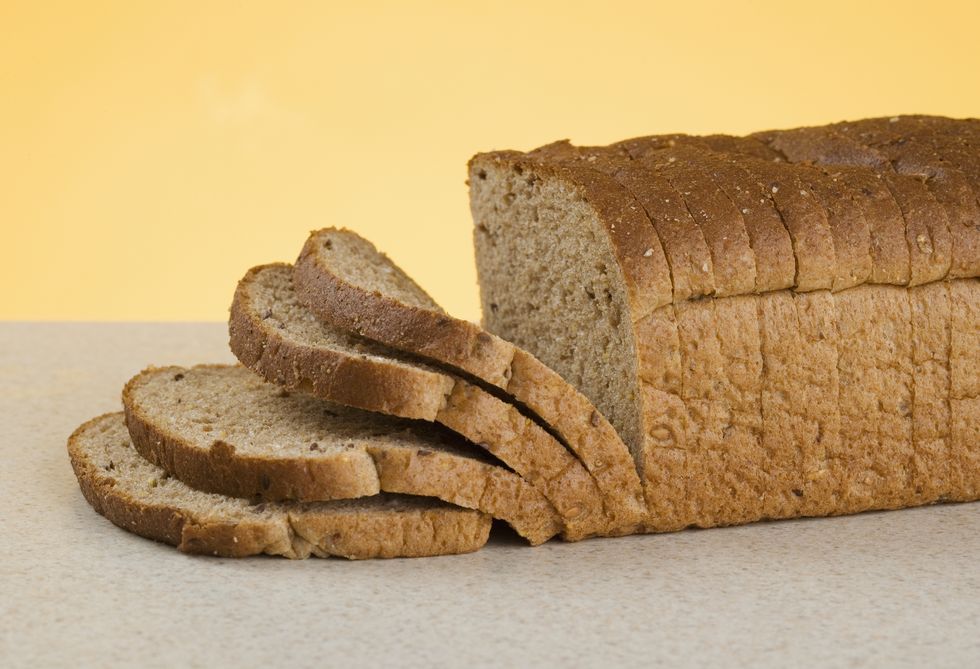
Normally, people looking to make healthy changes to their diet are told to skip carb-heavy options like bread, but there are scenarios when runners need to carb-load. Hilbert says if you reach for whole wheat when you’re making a sandwich or toast, you’ll get an added benefit. “A sandwich with two slices of whole wheat bread is a great way to help you reach your daily magnesium needs,” she says.
16. Avocado (58 mg in one avocado)

Avocado toast, anyone? This millennial favorite has made Hilbert’s list, thanks to all the healthy fats it provides in addition to that boost of magnesium runners need to stay in tip-top shape. “Add on top of toast, in salads, smoothies, or enjoy it as guacamole.”
17. Raisins (59 mg per cup, packed)
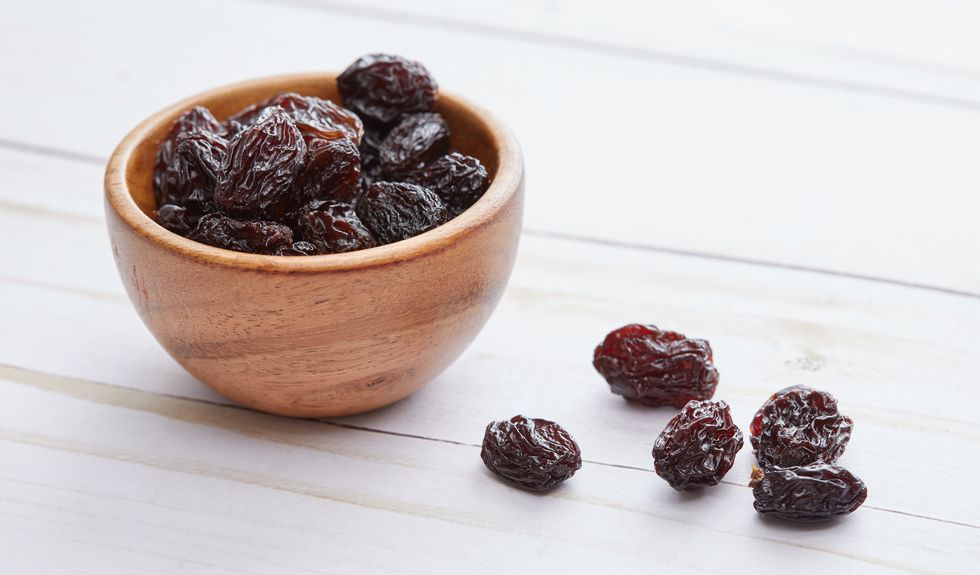
You can’t go wrong adding raisins to your trail mix, because they also help with digestion and can soothe some stomach issues—keeping you on your feet instead of sidelined in the bathroom during your run. Hilbert says you can add them to that trusty mix in your pack, toss them in a salad in place of dressing, or even enjoy them by the fistful.
18. Pumpkin Seeds (84 mg per ½ cup)

This versatile seed makes a tasty snack, and it also adds crunch to a grain bowl or salad. “Pumpkin seeds have a great balance of carbs, protein, and healthy fats, making them a satisfying snack for taming the training hunger,” Carroll says. To elevate the flavor, toss pumpkin seeds in a tablespoon of oil and your favorite seasoning—such as chili powder and lime juice or cinnamon and sugar—and roast in a 350-degree oven for 10 minutes.
19. Beet Greens (55 mg per ½ cup cooked)
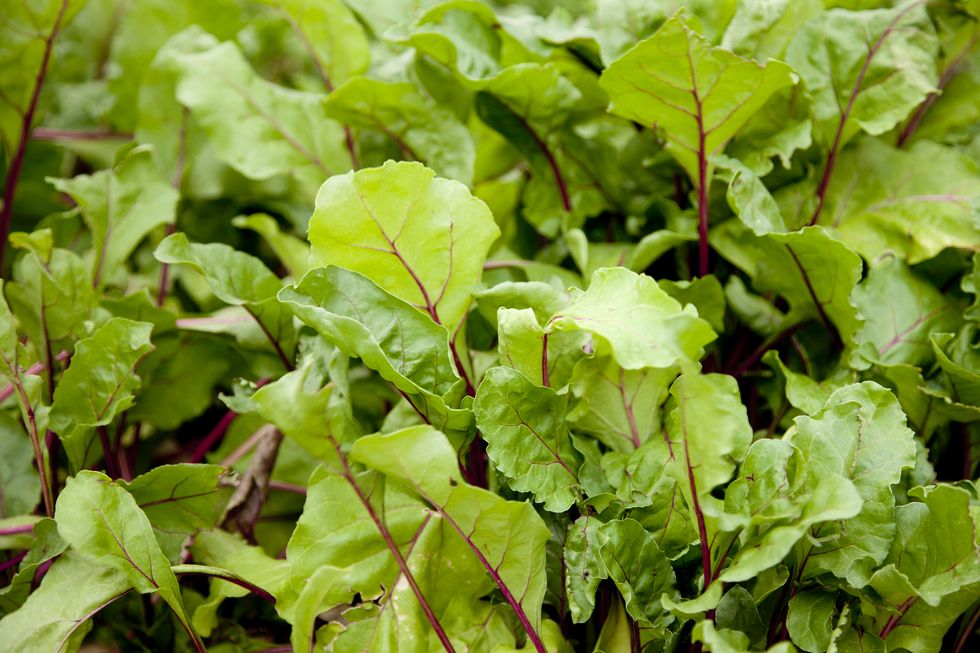
“Runners love beets for their dietary nitrates, but the greens are an important addition to your diet too,” Carroll says. “They’re loaded with good nutrition, like 11 percent of the daily value for magnesium and about 14 percent of your potassium needs—more than a banana,” she adds. If you’ve never used beet greens before, try subbing them in for sautéed spinach or kale in any recipe.
20. Cashew Butter (66 mg per 2 tablespoons)
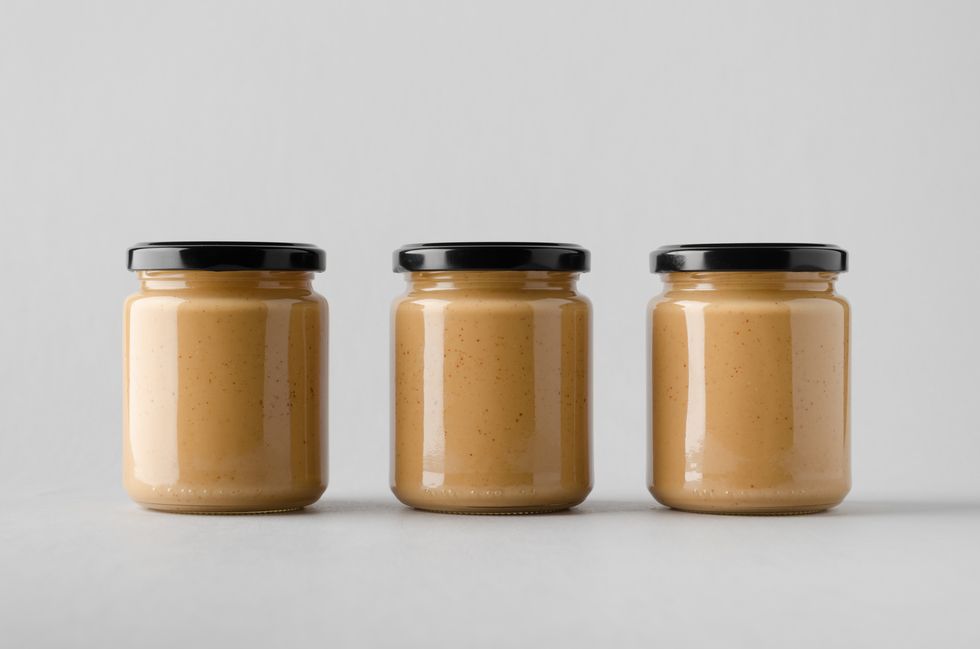
Switch up your nut butter game with magnesium-rich cashew butter. Just be sure to look for varieties that have just one or two ingredients—cashews and a touch of salt. Avoid any with added oils or sugars. “Dip an apple in it for a filling snack, or try it drizzled over pancakes for your post-long run recovery meal,” Carroll suggests.
21. Dried Prunes (71 mg per 1 cup, pitted)

Prunes are making a comeback, and rightfully so, since this dried fruit is rich in magnesium and fiber. Plus, research advocates eating just five to six prunes per day to potentially prevent bone loss. Snack on dried prunes to promote regularity or add them to a salad for a hint of sweetness.
22. White Beans (53 mg per ½ cup)

Add a “meatless Monday” to your repertoire with white beans for a significant serving of magnesium, fibre, and plant-based protein. They have a neutral flavor that can be puréed into a creamy dip or sauce, or they can be added to quesadillas, pasta, or salads.
23. Almonds (77 mg per 1 ounce)

“Just a single serving of almonds contain nearly 20 percent of your daily magnesium,” Asche says. “This is one of my favorite snacks with a piece of fruit,” she adds. Not to mention that almonds pack a big nutritional punch in a small package, since they serve as a good source of unsaturated fats, protein, fiber, Vitamin E, calcium, riboflavin, and niacin.
24. Chickpeas (39 mg per ½ cup, cooked)

Throw a ½ cup of this extremely versatile and affordable protein into your meal. Magnesium-rich chickpeas serve as the base for hummus or falafel, and they make a hearty addition to soups, salads, and even baked goods. And roasted, crunchy chickpeas are a delicious and healthy alternative to fried potato chips. “One of my favorite ways to eat chickpeas is in a simple curry with basmati rice,” Asche says.
25. Edamame (99 mg per 1 cup, cooked)
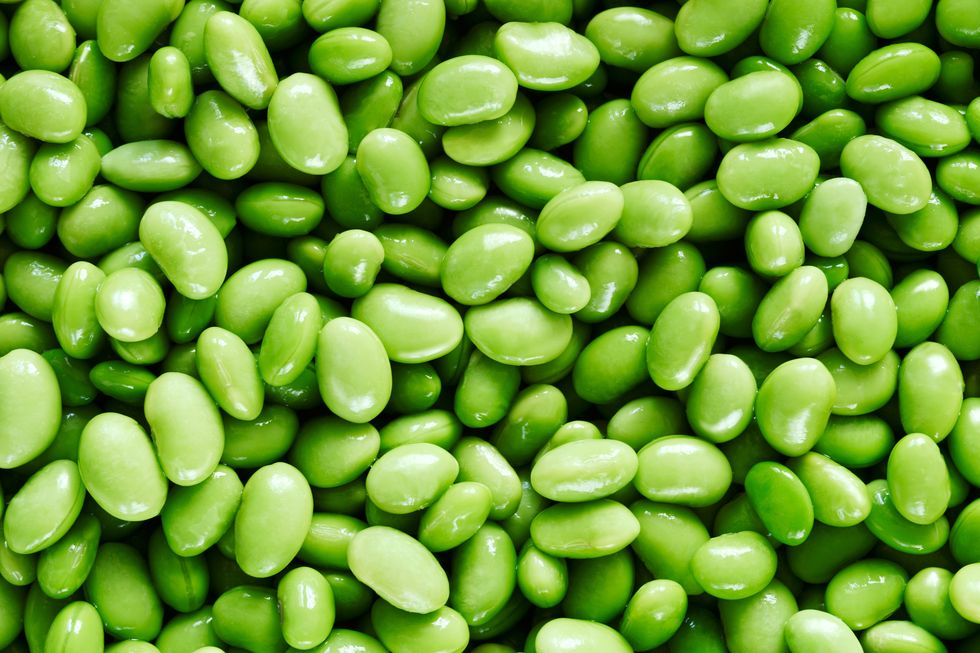
This fun-to-eat sushi staple is a good source of magnesium to keep in your freezer. Plus, it boasts an impressive 18 grams of protein in one cup. Pop it in the microwave for one to two minutes to defrost, season with sea salt, and have a date night in.
26. Dark Chocolate (70-86%, 65 mg per 1 ounce)
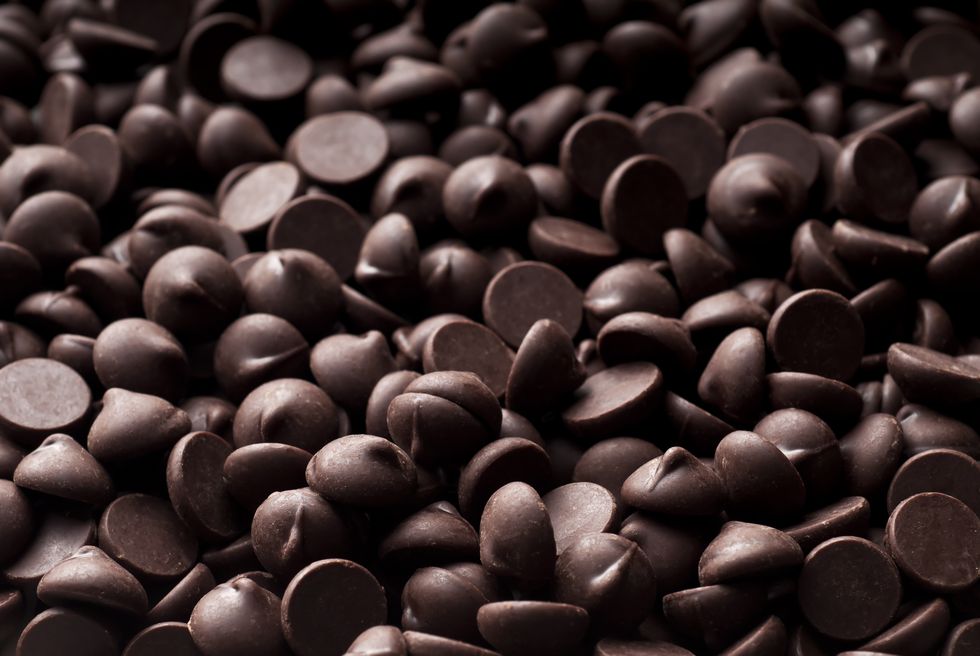
Chocolate lovers can rejoice, because a mere one ounce of dark chocolate has 15 percent of your daily magnesium needs. So go ahead and add a handful of dark chocolate chips to your trail mix—it does a body good.